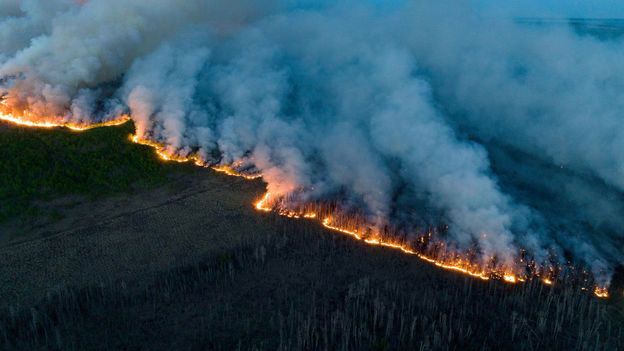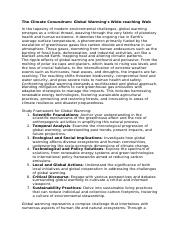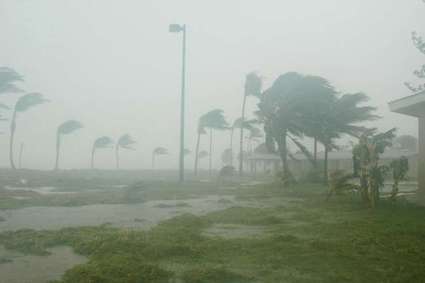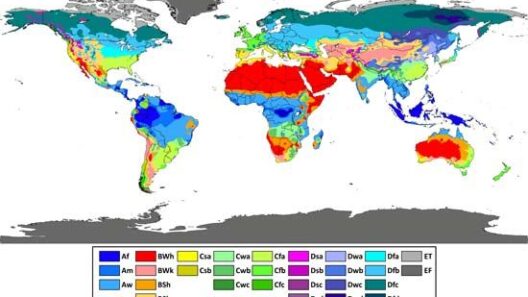The conversation surrounding climate change has taken a pivotal turn, particularly as we grapple with its tangible manifestations in the form of natural disasters. From raging wildfires to catastrophic floods, the interplay between climate change and natural calamities has become increasingly scrutinized. This article delves into the intricate dynamics of how climate change not only influences but indeed exacerbates these devastating events, thereby shaping our increasingly precarious relationship with the natural world.
To comprehend the relationship between climate change and natural disasters, it is essential to recognize the multifaceted nature of climate change itself. At its core, climate change refers to significant alterations in global weather patterns and temperatures, primarily driven by anthropogenic activities such as fossil fuel combustion, deforestation, and industrial practices. These activities contribute to the accumulation of greenhouse gases in the atmosphere, leading to climate disruptions with far-reaching consequences.
One of the most striking observations is the increase in the frequency and intensity of wildfires, particularly in regions that have historically remained resilient. For example, areas in North America, such as California, have witnessed unprecedented fire seasons that devastate vast expanses of land and threaten the safety of communities. The phenomenon is not solely attributed to arid conditions; rather, it is linked to prolonged droughts that climate change intensifies. As temperatures rise, moisture in the soil evaporates more quickly, leaving landscapes parched and conducive to fire outbreaks. The implications are staggering: as ecosystems become more vulnerable, the very biodiversity that supports life is put at risk.
This evolution of fire risk is not an isolated instance. In fact, it is part of a broader phenomenon wherein climate change engenders a feedback loop of destruction. The unfortunate reality is that wildfires release significant amounts of carbon dioxide back into the atmosphere, further augmenting the greenhouse effect and perpetuating an endless cycle of climatic exacerbation. Such evidence firmly establishes a direct correlation between human-induced climate change and the ferocity of natural disasters.
Flooding, too, exemplifies the interplay of climate change and natural disasters. Climate change influences precipitation patterns, leading to increased rainfall intensity and altered hydrological cycles. As temperatures rise, atmospheric water vapor capacity also increases, intensifying storms and consequently, the potential for flooding. Some regions experience torrential downpours, while others may face the wrath of hurricanes that roam with newfound power. The drastic shifts in weather patterns contribute not only to urban flooding but also to severe rural flooding, undermining agriculture and food security.
The catastrophic flooding experienced in the U.S. and globally underscores the urgent need for a paradigmatic shift in how we approach disaster preparedness and response. From infrastructure to community resilience, the frameworks that once sufficed are increasingly inadequate. For instance, outdated drainage systems in urban landscapes can no longer cope with the larger volumes of water produced by extreme weather events. This predicament becomes exacerbated in marginalized communities, where resources for mitigation are scant, thereby amplifying the vulnerabilities of those least equipped to weather such storms.
Moreover, the connection between climate change and increased extreme weather events such as hurricanes cannot be overlooked. Increasing sea surface temperatures create an environment where these storms can gain strength, producing sustained winds and torrential rainfall. The impacts are catastrophic, displacing populations and imposing insurmountable economic burdens on affected regions. As observed, these tragic outcomes often disproportionately affect low-income communities, demonstrating the intersectionality of climate justice and environmental concerns. Socioeconomic disparities heavily influence the capacity to adapt and recover, revealing a pressing need for equitable solutions.
Importantly, the fascination with these natural disasters extends beyond mere observation; it is rooted in a profound ethical responsibility. The realization that climate change is a human-induced phenomenon calls for a reevaluation of our priorities. In light of this, addressing climate change becomes not only an environmental imperative but a humanitarian one. The stakes have never been higher; the repercussions of inaction resonate through lost lives, eroded ecosystems, and economic instability.
In understanding the trajectory of climate change-induced natural disasters, it is essential to adopt a holistic perspective that incorporates mitigation strategies and adaptation measures. Transitioning to renewable energy sources, enhancing forestry management, and adhering to sustainable agricultural practices represent key steps in curbing further damage. Additionally, investing in resilient infrastructure and educating communities about the challenges posed by climate change can forge a path towards mitigation and adaptation.
Ultimately, the reality is stark: climate change is not just a distant theoretical concern but a pressing crisis that manifests through natural disasters like wildfires and floods. Recognizing and addressing the interconnections between climate change and these calamities is imperative for fostering a sustainable and just future. The narrative surrounding these disasters provides not only a platform for discourse but also an invitation for action. As stewards of the planet, we must confront the stark truths of our times and advocate for change, ensuring that future generations do not inherit a world ravaged by the consequences of our inaction.
In conclusion, the challenges posed by climate change require unequivocal acknowledgment and a concerted response. The escalating frequency and severity of natural disasters are not merely a byproduct of the environment; they are a clarion call for significant political, social, and economic reforms. Addressing these challenges is not only a matter of ecological preservation; it is one of social justice, urging a unified human effort to restore balance to our profoundly interdependent web of existence.








